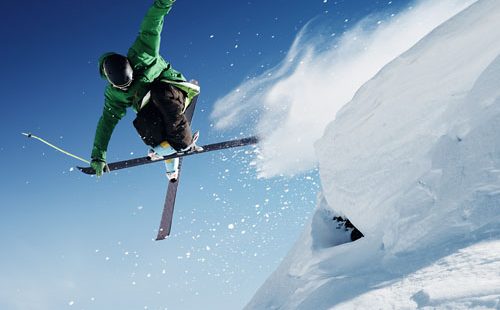Hot-dog
Newcomers to skiing might snowplow down the slopes, or, better yet, appreciate the view from the lodge, but adventurous skiers and snowboarders will hot-dog down the mountain. This term means to perform unusual or very intricate maneuvers in a sport, especially in a showy or boastful manner. The connection, if there is one, between this sense and that of a certain sausage snack is unclear, though you might find both types of hot dogs at most ski resorts.






















